How to choose a 2-3 liter pot?
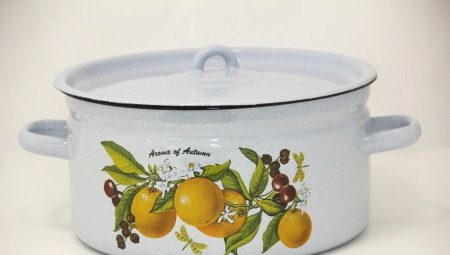
Experienced housewives know that the quality of a dish depends not only on how fresh products are used for its preparation, but also on the quality of the dishes in which it is prepared. Modern cookware has a host of properties that make everyday cooking a real pleasure: non-stick, easy to clean, without unpleasant odors emitted when heated. New generation pots and pans are an excellent choice for modern housewives.

Peculiarities
A 2-3 liter pot is one of the most commonly used in everyday life. You can boil cereals or pasta, mashed potatoes in it. It is best to cook light soups in a 3-liter saucepan for one or two days, which is ideal in summer.
In addition, it is very convenient to cook compote in a dish of this volume and drink it right away.
The main requirements for such a pan:
- easy to clean;
- does not absorb odors;
- not subject to corrosion.

Manufacturing material
The first and main parameter for choosing a pan is the material from which it is made. The most common now are:
- aluminum;
- cast iron;
- enameled metal;
- ceramics;
- heat-resistant glass;
- Teflon-coated metal;
- stainless steel.
Aluminum casseroles are lightweight, cheap and durable, and easy to use. But aluminum can deform. In addition, it emits toxic substances when heated, which can impart an unpleasant taste to food that is cooked in dishes made of this material. If acidic, salty or alkaline foods are placed in aluminum cookware, the oxide film will be damaged. Such dishes cannot be cleaned with a metal scraper, but due to their thinness, food particles constantly stick to it.
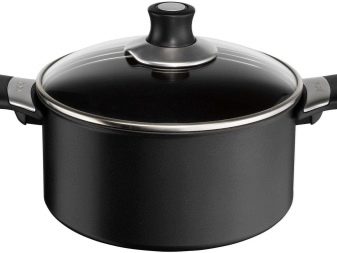
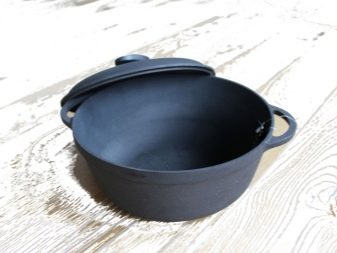

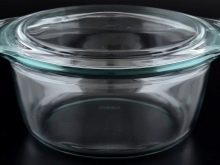
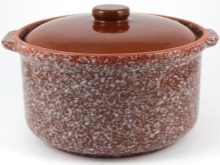
Cast iron cookware is the most durable, its non-stick properties are very high. You can cook, fry or stew products in it for a long time. It is common for cast iron to heat up slowly, but at the same time retain heat for a long time. It will not be damaged if cleaned with an abrasive product.
The disadvantages include high cost, heaviness of dishes, tendency to corrosion.
Cookware coated with enamel is ideal for making soups, jelly, compotes, side dishes. But the enamel is very fragile, it can break off even with a slight blow. The enamel breaks down even if the pan is handled carefully. You cannot clean it with an abrasive. As soon as a crack or chip appears on the enamel pan, it must be thrown away, otherwise harmful substances will enter the food being cooked.


Ceramic options, as well as heat-resistant glass pots, have an excellent aesthetic appearance. They ensure the preservation of the vitamin and taste properties of the products. They have good thermal stability and resistance to mechanical stress. You can bake food in such a dish, it is non-stick. But both types of material are fragile, fragile, and also poorly tolerate temperature changes.
More durable are pots with an aluminum base and a ceramic coating.
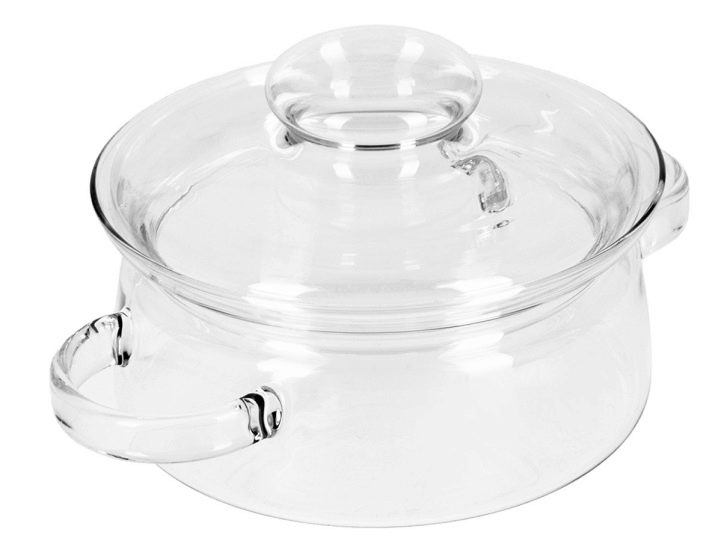
As for the Teflon-coated cookware, it is lightweight and has excellent non-stick properties. You can cook absolutely any dish in it. 2L pots can be used as a milk cooker, they can cook soup or compote, pasta and cereals. However, the Teflon coating must be handled with care., because it is easy to scratch.
If it is damaged, toxic substances will enter the food.
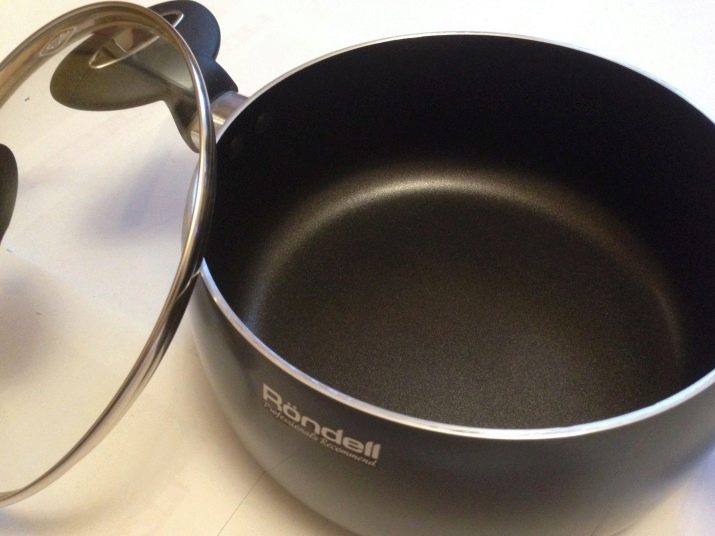
Medical grade stainless steel is most often used for the manufacture of dishes, containing chromium and nickel. Such pots are strong and durable, they are immune to mechanical stress, hygienic, beautiful and do not lose their attractive appearance. No toxins are released from stainless steel when heated. The disadvantages of this material can be called its high cost, especially if the dishes are made by a well-known manufacturer.
It is impossible to clean the stainless steel with aggressive abrasives, as well as put such a pan on an empty hot stove, otherwise blue-green stains may appear.
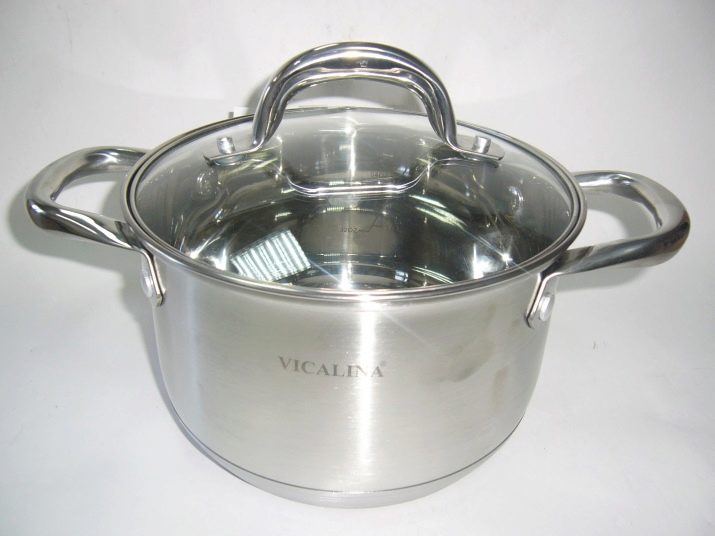
Nuances of choice
When choosing a suitable saucepan you must adhere to certain rules.
- The dishes must be intact, cracks, scratches, color irregularities, streaks, dots are unacceptable.
- Handles must be metal and hollow. Plastic handles, when heated, smell unpleasant and melt, wood is highly flammable. You should also make sure that the handles are securely attached to the pot - screwed or welded.
- If you buy pots with lids, it is better to stick to glass ones with small holes so that steam can escape.
- When choosing pots, it makes sense to purchase them in sets - small, medium and large. The set can also include a thick-walled saucepan and a milk cooker with or without a whistle.
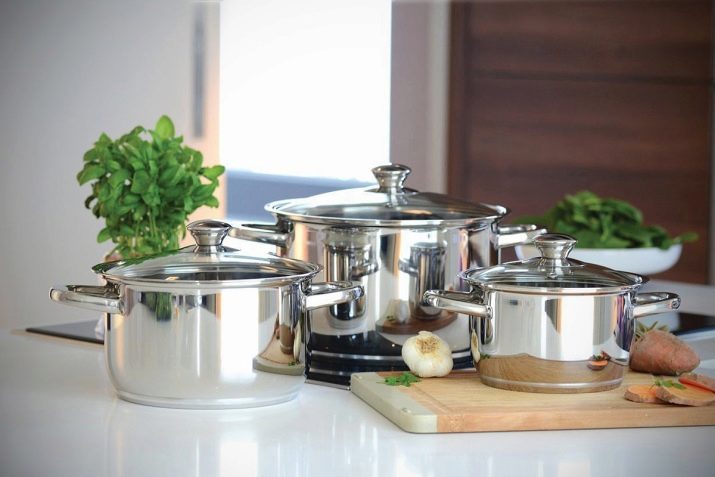
Manufacturers
Among the most popular manufacturers of small pots, there are several.
- BergHOFF Is one of the most famous and demanded companies in the Russian tableware market. The brand's products are of high quality and affordable prices. The most durable is the line of thick-walled cookware.
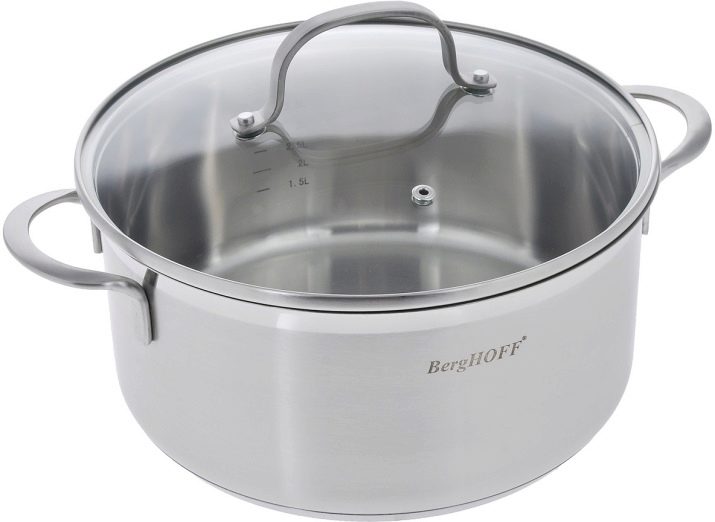
- Lessner - an English company that manufactures aesthetically pleasing appearance products. In addition to aesthetics, the dishes are distinguished by a long service life, while they are not too expensive.

- Luxstahl manufactures both large and small stainless steel pans. The products are equipped with a triple bottom, are very durable and have a long service life.

- Gipfel company manufactures tableware made of high quality medical alloy. The only drawback of the company's products is the high price.Customer reviews of this dish are ambiguous: many are dissatisfied with the pans, but there are no complaints about the pots.

How to choose a high-quality 2-liter saucepan, see below.








